In the world of football, endurance is the secret weapon that separates the champions from the rest. It’s the ability to keep pushing, outlast opponents, and maintain peak performance until the final whistle blows.
Whether you’re a professional athlete or a passionate amateur, building stamina and endurance is essential for success on the field. That’s why we’ve curated the ultimate football endurance drills list, designed to push your limits and enhance your cardiovascular fitness.
From high-intensity interval training to agility drills, these exercises will challenge your body and mind, preparing you for the demands of the game.
So, lace up your boots, grab your water bottle, and get ready to take your game to the next level. It’s time to unleash your inner athlete and dominate the field with our comprehensive football endurance drills list.
Football Endurance Drills List
Here are a few popular endurance drills you can try:
Shuttle Runs

Set up two cones approximately 10 yards apart. Start at one cone and sprint to the other, touching the ground with your hand. Immediately change direction and sprint back to the starting cone.
Repeat this back-and-forth movement for a set duration or number of repetitions. Shuttle runs improve agility, acceleration, and cardiovascular endurance, mimicking the quick changes in direction often required in football.
Box Jumps
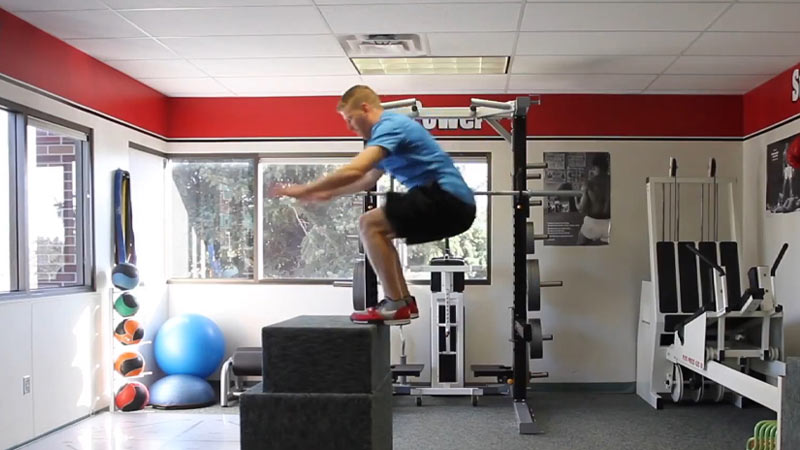
Find a sturdy box or platform of varying heights. Stand in front of it with your feet shoulder-width apart. Explosively jump onto the box, landing softly with both feet. Step back down and repeat for a set number of repetitions.
Box jumps enhance lower body power, explosiveness, and muscular endurance, which are crucial for explosive movements like jumping, sprinting, and changing direction on the field.
Interval Sprints
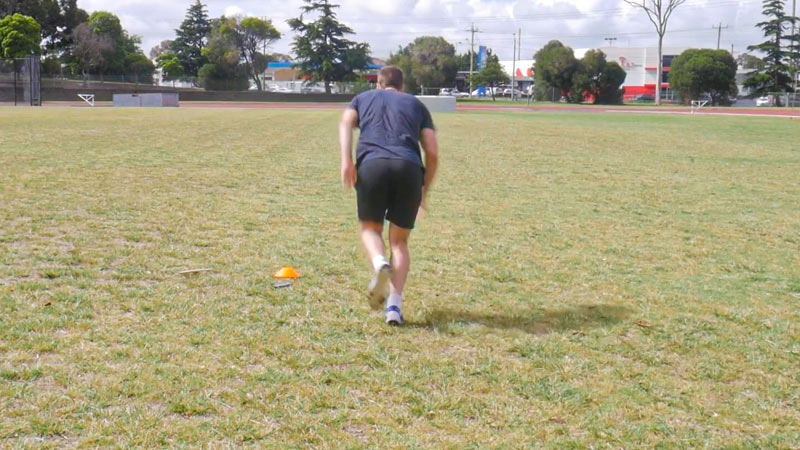
Mark a distance of 40-60 yards on the field. Sprint at maximum effort for the designated distance, then walk or jog back to the starting point to recover. Repeat this cycle for a set number of repetitions.
Interval sprints improve both aerobic and anaerobic endurance, simulating the stop-and-go nature of football and helping you maintain high-intensity performance throughout the game.
Circuit Training
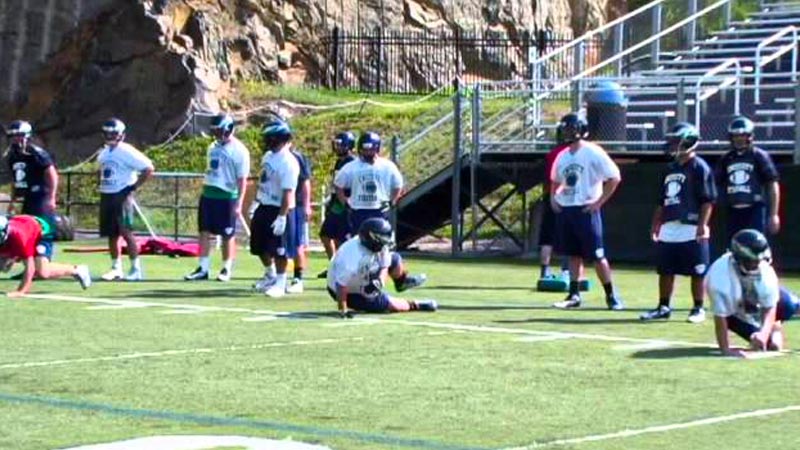
Create a circuit of various exercises such as burpees, mountain climbers, jumping jacks, and high knees. Perform each exercise for a set duration or number of repetitions before moving on to the next one without rest.
Complete the entire circuit and then rest for a short period before repeating. Circuit training challenges your cardiovascular system, muscular endurance, and overall stamina, making it an effective way to improve your endurance for football.
Suicide Runs
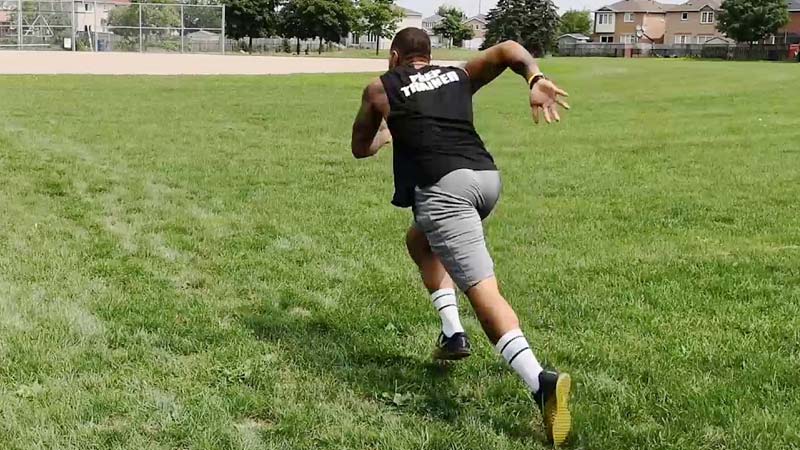
Set up markers at various distances, such as 10, 20, 30, and 40 yards. Start at the first marker and sprint to touch it, then quickly turn and sprint back to the starting point.
Repeat this pattern for each marker, progressively increasing the distance. Suicide runs improve speed, agility, and endurance, as they require quick bursts of acceleration and deceleration.
Hill Sprints
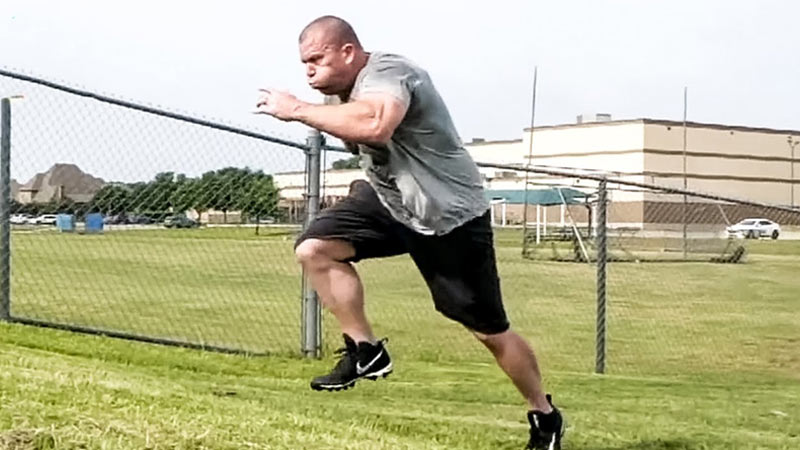
Find a steep hill or incline and sprint up it as fast as you can. Walk or jog back down to recover, then repeat for a set number of repetitions.
Hill sprints are a challenging drill that builds leg strength, power, and cardiovascular endurance.
The incline adds resistance, making it an excellent exercise for simulating game situations that require explosive bursts of speed.
Ladder Drills
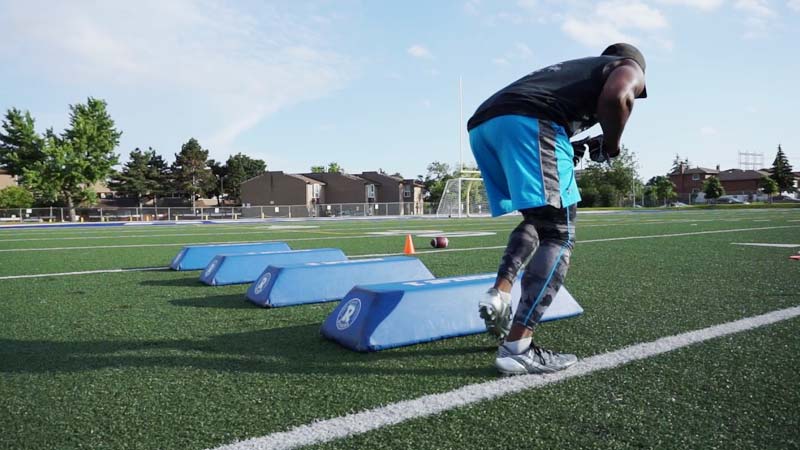
Lay out an agility ladder on the ground and perform various footwork patterns, such as high knees, lateral shuffles, and quick steps, while moving through the ladder. Focus on speed, precision, and coordination.
Ladder drills improve foot speed, agility, and coordination, which are essential for quick changes in direction and maintaining control on the field.
Tempo Runs

Set a moderate pace and maintain it for a designated distance or time. Tempo runs improve aerobic endurance and help you sustain a consistent level of effort throughout the game.
Focus on maintaining good form and breathing rhythmically. This drill is particularly beneficial for midfielders and players who cover a lot of ground during a match, as it trains the body to efficiently use oxygen and delay fatigue.
Cone Agility Drills
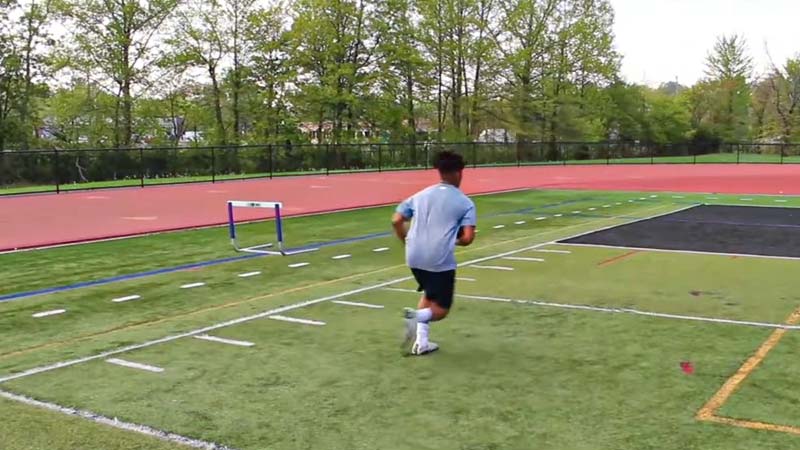
Set up a series of cones in a zigzag pattern, approximately 5 yards apart. Start at one end and weave through the cones as quickly as possible, maintaining good form and staying low to the ground.
Focus on quick changes of direction and explosive acceleration. Repeat the drill for a set number of repetitions or times.
Cone agility drills improve lateral quickness, change of direction, and overall agility, which are crucial for evading defenders and maneuvering through tight spaces on the field.
Fartlek Training
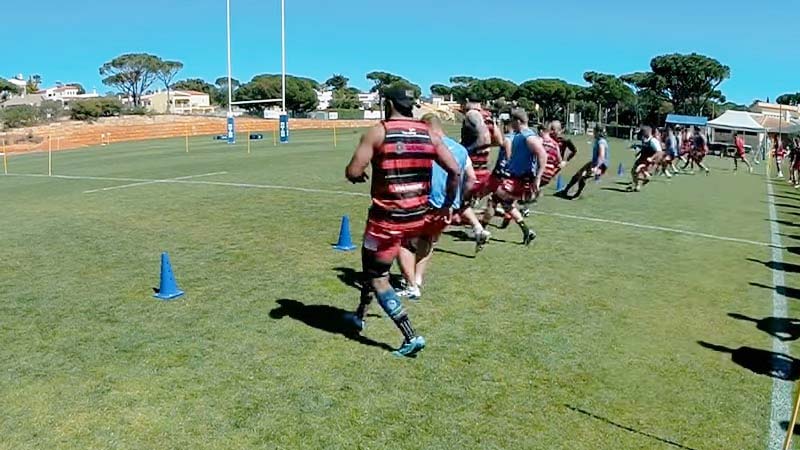
Fartlek, which means “speed play” in Swedish, is a form of interval training that combines periods of fast running with slower recovery periods.
During a fartlek session, vary your pace by alternating between sprints, jogs, and moderate runs. You can incorporate landmarks or set time intervals for each segment.
Fartlek training improves both aerobic and anaerobic endurance, as well as the ability to adjust to different speeds during a game.
Burpee Broad Jumps
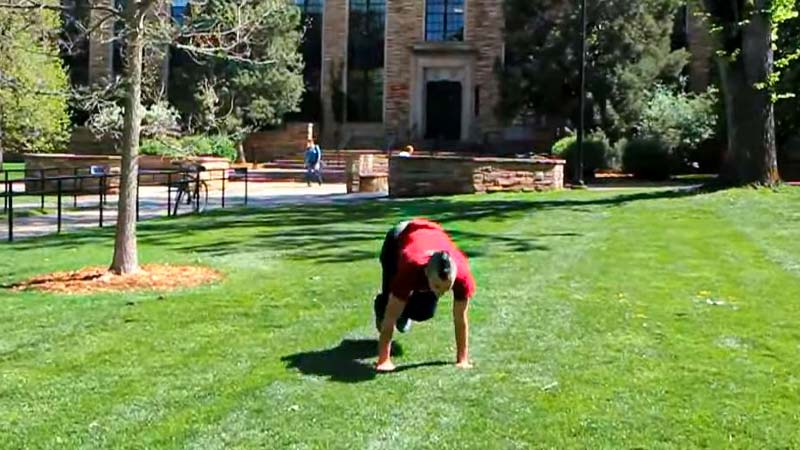
Begin in a standing position, then drop down into a burpee by squatting, kicking your feet back into a push-up position, performing a push-up, and then jumping your feet back up towards your hands.
From the squat position, explosively jump forward as far as you can, landing softly and immediately transitioning into another burpee. Repeat for a set number of repetitions or distances.
Burpee broad jumps enhance explosive power, lower body strength, and cardiovascular endurance, making them an effective full-body exercise for football players.
Tabata Sprints

Tabata training is a high-intensity interval training (HIIT) method that involves 20 seconds of all-out effort followed by 10 seconds of rest, repeated for a total of 4 minutes.
Set up markers at a distance of 40-60 yards and sprint as fast as you can for 20 seconds, then rest for 10 seconds. Repeat this cycle for a total of 8 rounds.
Tabata sprints improve both aerobic and anaerobic endurance, as well as speed and recovery time, making them an efficient and intense drill for football players.
Staircase Runs

Find a set of stairs or bleachers and sprint up them as quickly as possible, focusing on driving your knees up and maintaining a strong, upright posture. Walk or jog back down to recover, then repeat for a set number of repetitions.
Staircase runs are a challenging drill that builds leg strength, power, and cardiovascular endurance, while also improving explosive acceleration and agility.
The incline of the stairs adds resistance, making it an excellent exercise for simulating game situations that require bursts of speed and endurance.
Medicine Ball Slams
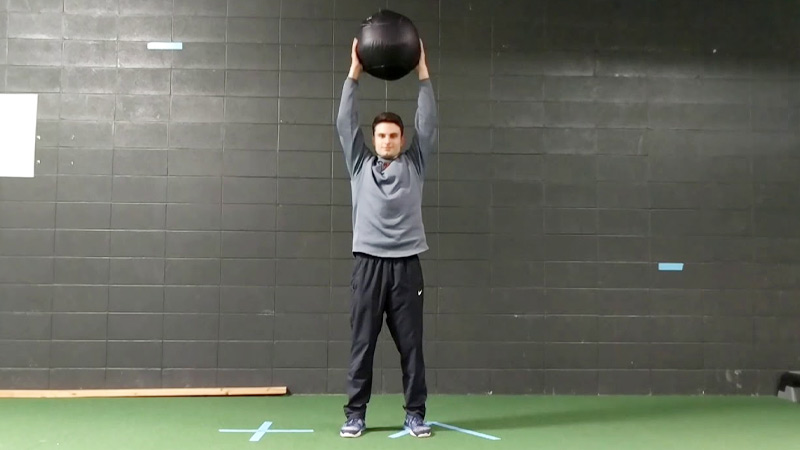
Stand with your feet shoulder-width apart, holding a medicine ball above your head. Explosively slam the ball onto the ground in front of you, using your core and upper body strength.
Catch the ball on the bounce and repeat the movement for a set number of repetitions. Medicine ball slams are a dynamic full-body exercise that improves power, explosiveness, and cardiovascular endurance.
This drill mimics the forceful movements involved in football, such as tackling, throwing, and blocking.
Treadmill Sprints

Set a treadmill to a challenging speed and sprint on it for a designated time or distance. Focus on maintaining proper running form and increasing your speed as you progress.
Treadmill sprints are a convenient way to work on speed and endurance, as you can control the pace and incline.
This drill helps improve cardiovascular fitness, leg strength, and mental toughness, as you push through the resistance of the moving belt.
Bear Crawls
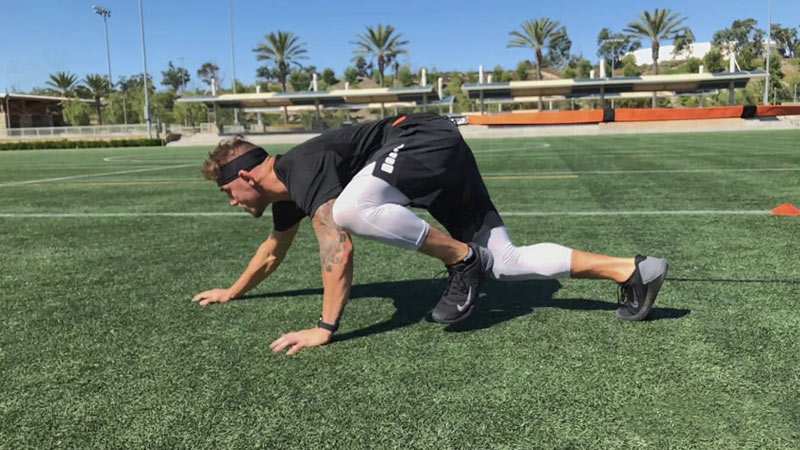
Start in a push-up position with your knees slightly bent and hovering just above the ground. Move forward by crawling on your hands and feet, keeping your back flat and core engaged.
Bear crawls engage multiple muscle groups, including the shoulders, core, and legs, while also challenging your cardiovascular endurance.
This drill improves overall body strength, stability, and endurance, which are essential for maintaining control and power on the football field.
Sand Dune Sprints

Find a sandy area or dune and sprint up the incline as fast as you can. The soft, unstable surface adds resistance and requires more effort to push off. Walk or jog back down to recover, then repeat for a set number of repetitions.
Dune sprints are a challenging drill that builds leg strength, power, and cardiovascular endurance, while also improving balance and stability.
This exercise simulates the demands of running on uneven terrain, helping you adapt to different field conditions.
Continuous Shuttle Runs
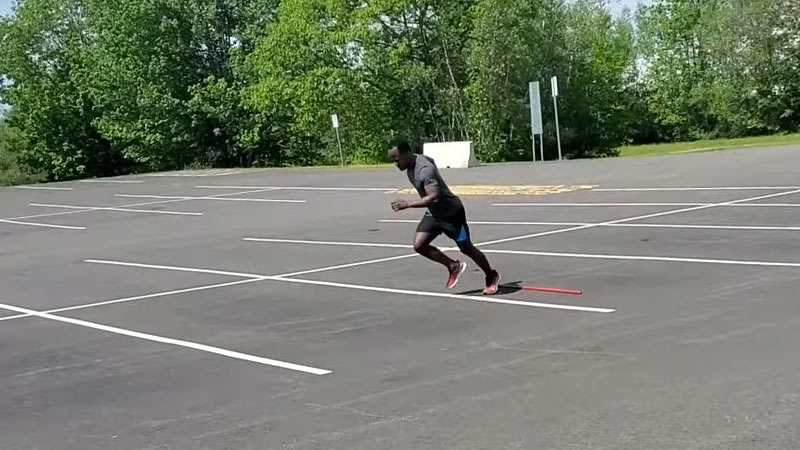
Set up two cones approximately 20 yards apart. Start at one cone and sprint to the other, touching the ground with your hand. Immediately change direction and sprint back to the starting cone.
Without stopping, continue shuttling back and forth for a set duration or number of repetitions. Continuous shuttle runs are intense drill that improves speed, agility, and endurance, as it requires constant movement and quick changes in direction.
This exercise replicates the demands of game situations where players need to cover ground rapidly and maintain a high level of performance.
FAQs
How often should I incorporate football endurance drills into my training routine?
The frequency of incorporating football endurance drills into your training routine depends on your overall training program and goals. However, it is generally recommended to include endurance drills at least 2-3 times per week to see significant improvements in stamina.
How long should each football endurance drill session last?
The duration of each football endurance drill session can vary depending on your fitness level and specific goals. A typical endurance drill session can range from 20-60 minutes.
Can I modify football endurance drills to suit my fitness level?
Absolutely! Football endurance drills can be modified to suit your fitness level and gradually progress as you improve. You can adjust the intensity, duration, or repetitions of each drill to match your current capabilities.
Are football endurance drills only for professional players?
No, football endurance drills are beneficial for players of all levels, from beginners to professionals. Endurance is a fundamental aspect of the game, regardless of your skill level. These drills help improve your cardiovascular fitness, stamina, and ability to perform at a high level throughout the game.
Can I do football endurance drills alone, or do I need a training partner?
Football endurance drills can be done both alone and with a training partner or team. While having a training partner can add motivation and competition, many endurance drills can be performed individually. Running drills, agility ladder exercises, and even some circuit training can be done alone.
Bottom Line
As you wrap up your training session with the football endurance drills list, remember that building endurance is a continuous process. Consistency, dedication, and a strong mindset are key to achieving your goals on the field.
By incorporating these drills into your regular training routine, you’ll not only improve your stamina but also enhance your overall performance.
Don’t forget to listen to your body and take rest days when needed to prevent overexertion and injury. So, go out there and give it your all. Push yourself beyond your limits, embrace the challenges, and watch as your endurance and performance soar to new heights.
With the ultimate football endurance drills list as your guide, you’re well on your way to becoming a formidable force on the gridiron. Good luck, and may your endurance carry you to victory!







